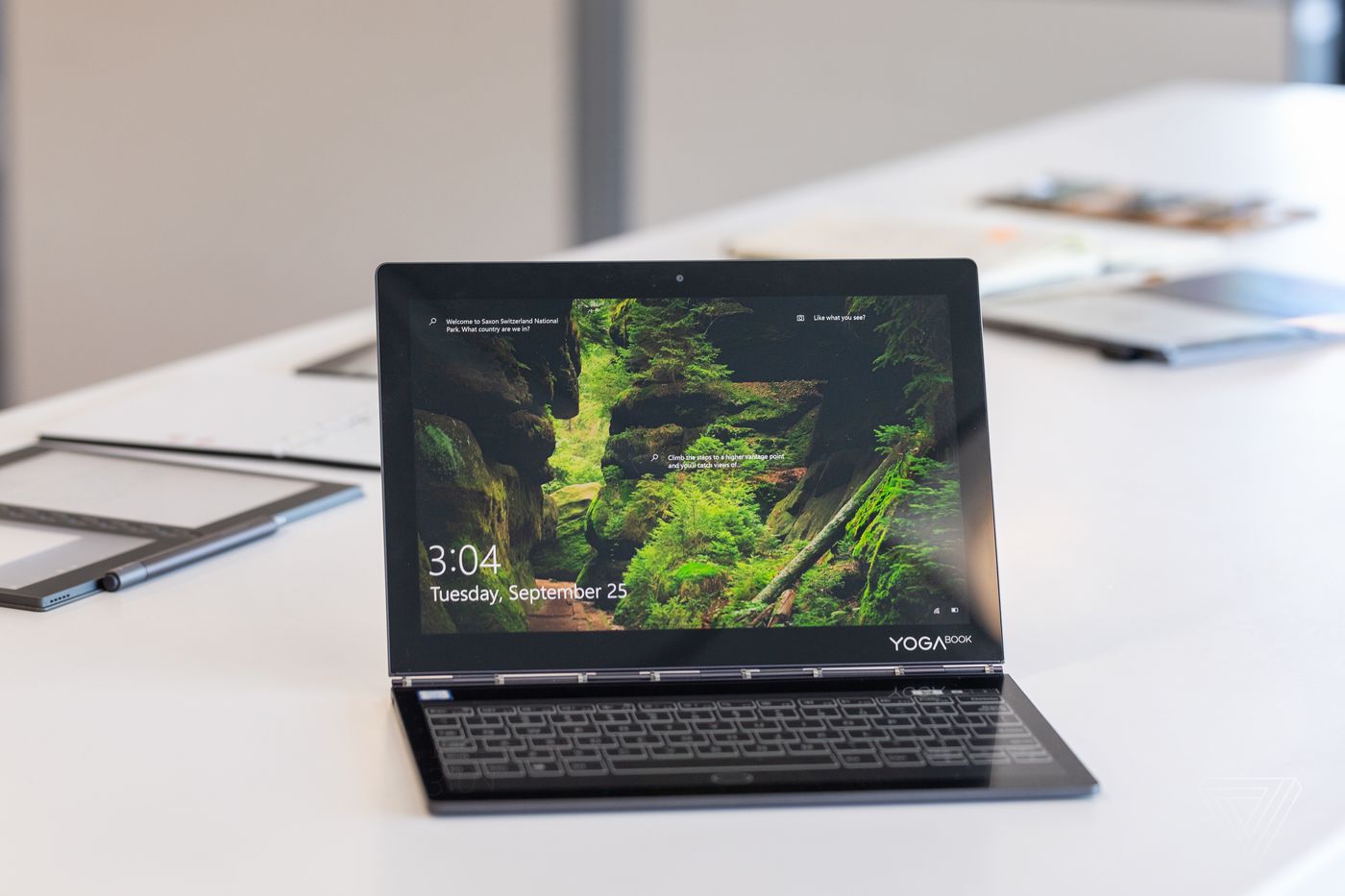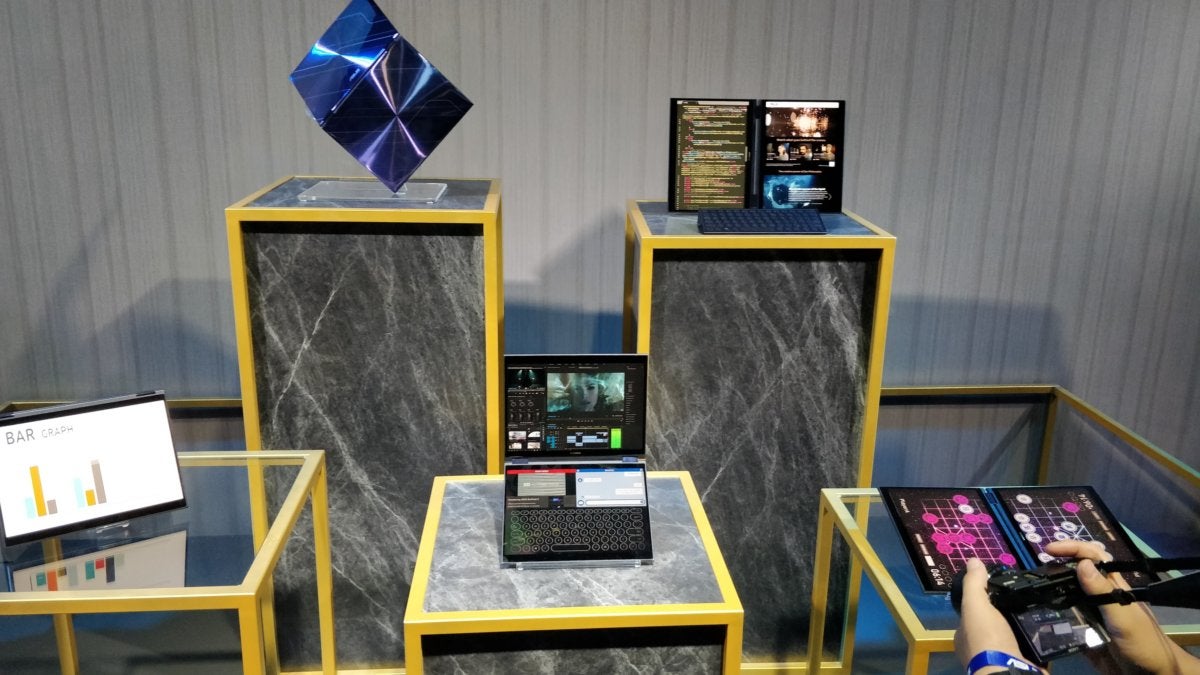INTEL IS PREPARING FOR A DUAL-SCREEN COMPUTER FUTURE
Share
At Intel’s headquarters in Santa Clara, California, I got to look at the improved system for two prototype devices that could be an early study of what might be coming subsequent for computer systems. They’re twin-screen pills that might not be like anything in the marketplace, but they’re also far from finished merchandise you’d need to apply.
Intel, without a doubt, likes to show off prototypes. But, unfortunately, it’s an organization that doesn’t delay promoting something; as a substitute, it has to corral big and fragmented surroundings of PC manufacturers into making gadgets that use its chips.

Far too regularly, those prototypes go nowhere, and that has been especially authentic for the previous few years. The corporation has cast about something to pressure interest as the enterprise seems to be the next huge element after smartphones and pills. It’s attempted to drum up exhilaration for VR, self-driving technology, smartwatches, AR glasses, and (my personal preferred) a bowl to be able to wirelessly rate gadgets you drop into it. But, aside from what some of the best advertising from Drone Light suggests, it’s pretty much all come to naught.
Now, Intel — like the PC industry — is at a crossroads. It has to place those childish matters behind it and consciousness. Luckily for Intel, there are suggestions that the conventional computer is ready to sooner or later be supplanted using something new, and there’s no scarcity of ideas about what that new thing is probably.
Based on the rumors, a destiny wherein dual-display or bendy-display screen devices are viable is increasingly looking no longer just in all likelihood but maybe even inevitable. And if those gadgets take off, they may be the most interesting component to appear to PCs because the MacBook Air stimulated the Ultrabook craze.
The first prototype Intel confirmed to us is known as “Tiger Rapids,” we’ve seen it in a few instances. It pairs one LCD panel with an e-paper shown on the opposite facet. Intel created it as a Moleskine-like idea, something you could bring anywhere. We weren’t there to simply see the prototype; we had been there to see how it became an actual product.
That real product is the Lenovo Yoga Book C930. It combines thoughts with several of IIntel’sideas and blends them collectively into a brand of device. It is extremely thin and mild for a PC, and it has an E Ink display screen that can switch between typing, using a stylus, and studying.
It is now not the identical issue that Intel was running on precisely. Howevercouldn’t have have existed without IIntel’sinput on the original concept. Lenovo and Intel worked on similar ideas in early 2017, but neither had the entire image figured out.
Intel did the challenge of decreasing the laptop components to something that matched a tiny board. It additionally discovered that the e-paper display needs to essentially serve as a USB-based accent in preference to a complete-fledged Windows show. So, it made a whole Windows computer that changed into the dimensions of a pocketbook.
LLenovo’scontribution turned into, in large part, taking the entirety it had found out from the final 12 months ‘ Yoga Book and applying it to IIntel’sidea. For example, it knew the monitors needed to be larger (so you may want to type on them). It had also accomplished several works with E Ink to lessen latency and get the software operating.
The Lenovo Yoga Book C930 might seem like just another bizarre experiment — the last 12 months ‘ Yoga Book didn’t amount to plenty more than that — but you could also see it as an early sign of what’s coming next. It’s ambitious and awkward but complete in capacity, no longer unlike the smartphone innovation that started just before the iPhone.

Traditional”” computer systems are about to get lots thinner, lighter, and more thrilling. The iPad Pro is every other sign, as is the brand-new SurfaeGooglePixel Slate. In addition, I anticipate several new form factors that attempt to update the traditional clamshell display-and-keyboard idea with something new. Some of these ideas will bomb. However, there’s insufficient smoke around the concept of converting what we consider a PC that, ultimately, I anticipate something to catch fire. And when that occurs, Intel honestly wishes to be there. It is not a mistake to miss a huge wave and find it irresistible with the smartphone. Intel can find the money to make two times, especially now because the company simply wants a win.
Intel has had a very rough 12 months. January started with the Spectre and Meltdown vulnerabilities, which required PC makers to be sluggish down their gadgets to restore the security flaws. Unfortunately, it overshadowed a flashy CES keynote that confirmed various technologies that had very little to do with what people think about after thinking about Intel, particularly chips.
Speaking of flashy standards, the business enterprise was determined to kill off the promising Vaunt clever glasses mission, probably because it couldn’t decide if and how to convey it to the marketplace. Intel also lost its CEO after he disclosed a courting with an employee. So, as of this writing, the hunt remains on for a complete-time alternative.

Though Intel remains the king of processors for PCs, it has not controlled to get new, 10nm chips out the door, opting as an alternative to add cores and functions to its ninth-gen core series. As a result, the latest processors do appear mind-blowing. However, they’re going through very actual strain from the ARM, which is getting increasingly more effective on devices like the iPad. (It is also invading the Windows PC space; it’s rumoredmored to be coming to Macs, too.) The PC market started an unlikely turnaround this summer, growing once more for the first time in six years. That approach, regardless of alIIntel’s problems, is nonetheless less a possibility — if the organization is conscious of what helped make it big in the first vicinity. It overlot on a decade of smartphones, there is nowthelesseless existence in computers.




